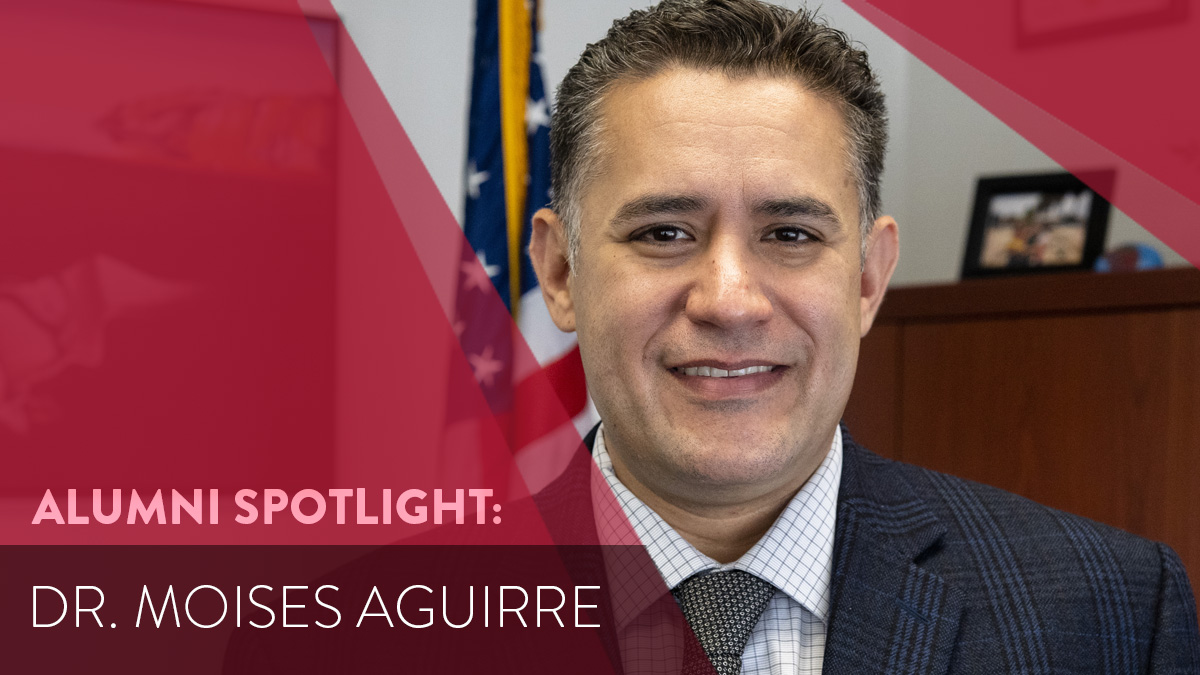Dr. Moises Aguirre (’05, ’15) has an intimate understanding of education’s power to change lives and circumstances. The son and grandson of migrant farmworkers from the Imperial Valley, he is the first person in his family to finish high school, graduate from college and earn his doctorate — the latter accomplishment completed in San Diego State’s University’s Ed.D. in Educational Leadership (PK-12 concentration) program.
“There's this sense of firsts,” Aguirre said. “My parents didn't achieve more than a middle school education in Mexicali, Mexico. So I acknowledge a sense of amazing responsibility that comes from the fact that I was able to obtain an education.
“It’s a responsibility to future generations to ensure that we provide education that allows for upward mobility. We need to help students find their passion and find their voice.”
In April, Aguirre took on a leadership role that will allow him to do just that for countless young people in San Diego’s South Bay area — superintendent of Sweetwater Union High School District. Sweetwater is California’s largest secondary school district, serving more than 36,000 students each year. Aguirre started in the district in 2015 as assistant superintendent for facilities and operations before being tapped as interim superintendent in 2020 during the early months of the COVID-19 pandemic.
We recently chatted with Moises about his transborder upbringing, his SDSU experience and what drives him as an educational leader.
What was it like to take over the district during a time of crisis?
“At the time, what was really challenging was having dual crises, as we were dealing with a budget deficit along with the pandemic. Communication was key. Everyone from teachers to parents to elected officials needed to know what was going on, and I needed to forge a communication style for each. It entailed going through unprecedented questions and unprecedented scenarios and doing it in a way that was thorough and methodical while conveying that sense of confidence across the district. I saw my job as bringing a sense of stability, and I think we’ve achieved that.”
What’s foremost on your plate now?
“I really want to focus on how we, as an organization, learn from this experience. Our approach might change. For example we started a virtual learning academy in our district called LAUNCH. We really just need to see how we can adjust to changing times, changing learning styles and changing expectations from all of our stakeholders. It starts with our students as the focus, but it’s also parents, teachers, counselors, principals, support staff and the concentric circles that build from there.”
How did your upbringing in the Imperial Valley shape you?
“I consider myself a fronterizo (borderlander). I grew up in Calexico/Mexicali and then came to school in San Diego and loved it so much that I stayed here. It gives me a sense of appreciation because, going back and forth across the border, you see the opportunities that we have here. For me it's very important that our students understand the opportunity that's before them to pursue their passion.”
What else has shaped you as an educator?
“At an intrinsic level, something that is very important to me is family. I have five children of my own. One is in university, two daughters are in high school in our district and two sons who will eventually come into our district are in elementary school. It really gives me the ability to see things differently.”
What did you take from your experience in SDSU’s Ed.D. program?
“For me, it was really both the theory and the practice. Not being a traditional educator, it really allowed me to have a sense of the theory, the approaches and how to build and design a program from a doctorate-level perspective. I think the world of San Diego State and how it enabled me to pursue my aspirations.”

